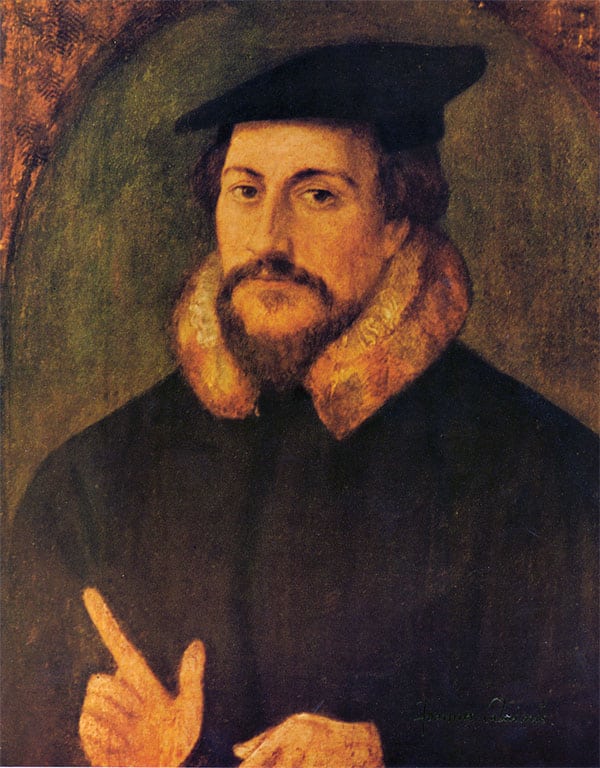The Origin Of The Swiss Watch Industry
You may remember the 2004 movie starring Ashton Kutcher, ‘The Butterfly Effect’ that emphasized the Chaos theory which, in mechanics and mathematics, teaches us that small events can have enormous consequences. The film’s opening title reminds us – a butterfly flapping its wings in Asia could result in a hurricane halfway around the world. Makes sense, right? After all, the Swiss watch, you may own, can be attributed to a similar phenomenon.
In the early 1530s, the French reformer John Calvin, at the time, had openly renounced Roman Catholicism and embraced Protestant views. He helped popularize the belief in the sovereignty of God in all areas of life, as well as the doctrine of predestination – meaning that all events have been willed by God.

An educated man, by 1532, Calvin received his licentiate in law, similar to a Master’s degree, at the cities of Orléans, Bourges, and Paris, France. He published his first book, an explanation on Seneca the Younger’s ‘De Clementia’, the two volume hortatory essay written 1,500 years earlier by the Roman Stoic Philosopher. During the same time, tensions, in the area, began to rise at the, newly formed, College Royal, in Paris, between the reformers and their conservative senior faculty members. On November 1st, 1533, Nicolas Cop, the rector of the college, gave an inaugural address asking for reformation in the Roman Catholic Church which the conservatives scoffed at, as practicing religious heresy, eventually forcing Cop to run off to Basel, Switzerland. Calvin, a friend of Cop, was implicated in the offence, as well, and forced into hiding. By 1536, Calvin had separated himself from the Roman Catholic Church and made plans to go to Strasbourg, near the German border. However, war broke out between Francis I, of France, and Charles V, the Holy Roman Emperor and King of Spain, essentially a battle to achieve control over territories in Northern Italy. In response, Calvin decided to head to Switzerland, as well. While in Switzerland and passing through Geneva, he met William Farel, a local reformer, who asked Calvin to stay with him and help aid the Protestant churches- Calvin agreed.
Calvin became a principal figure in the development of the system of Christian theology, later called Calvinism – a denomination of Protestantism . He generated tremendous controversy as a dynamic polemicist and apologetic writer. The entire Swiss watch industry, ironically, began as a reaction to his stern teachings.
Calvinism strictly regulated every aspect of a person’s life: it made church attendance mandatory, encouraged simplicity in dress, and forbade many forms of enjoyment such as dancing, singing, and playing cards. In 1541, among Calvin’s teachings was a ban on wearing jewelry which, thankfully, created a butterfly effect – that effects us all, even today. No longer could the shops decorate their windows with gold and diamonds, the jewelers found themselves in a dilemma. Fearing ruin, Geneva’s goldsmiths, and jewelers, turned to watchmaking instead, sharing talent with an influx of French refugee jewelers who had, also, fled. As luck would have it, Calvin considered watches to be a necessity due to their practical function of keeping time and made them exempt from the jewelry ban. So, the jewelry craftsmen joined forces with the efficient watchmakers which ushered in the celebrated Swiss watches, that we know today.
This new craft spawned an industry and by the end of the century Geneva had acquired a reputation for excellence. In 1601, the local artisans formed the Watchmakers Guild of Geneva, the first of its kind in the world. The guild ensured that the quality of watches made by its members were maintained, at the highest level, by strict control. Watches became so popular that the city, of Geneva, became crowded, with competitors, forcing watchmakers to migrate north to the Jura region and, eventually, resulted in forming ‘The Watch Valley of Switzerland’ where a strong majority of, luxury, Swiss watch companies take up residence, to this day.

